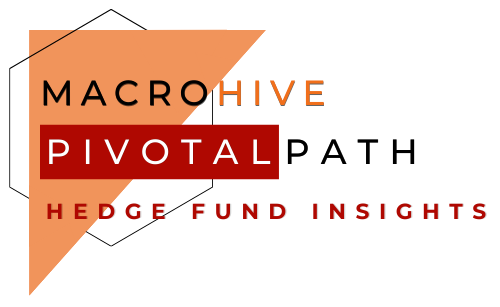
Commodities | Equities | FX

Commodities | Equities | FX
This article is only available to Macro Hive subscribers. Sign-up to receive world-class macro analysis with a daily curated newsletter, podcast, original content from award-winning researchers, cross market strategy, equity insights, trade ideas, crypto flow frameworks, academic paper summaries, explanation and analysis of market-moving events, community investor chat room, and more.
All major hedge fund strategy Indices were positive in July other than Managed Futures which declined 8bps. They are now all positive in 2023 with the exception of Global Macro which rose for the second month in a row but remains -0.4% for the year. The Equity Sector Index continues to lead the pack up 9.3% YTD. In July, the Event Driven Index gained the most, appreciating 2.1%.

The chart below depicts alpha generation for each PivotalPath Index, ranked from high to low. Each strategy is color-coded for easy tracking.
For the 12-month rolling period ending in July, all Indices increased alpha with the Managed Futures Index at the top of the group. The Equity Sector Index continued its rise from the bottom of the pack in 2021, 2022 and earlier in 2023.

As illustrated in the graph below, all AUM bands were once again positive for the month. YTD, all AUM bands are positive with the $1B-$2.5B band marginally leading the way. Smaller funds performed well in July and on a YTD basis.

The PivotalPath Composite Index rose 1.1% in July, bringing the index to +4.5% YTD vs. the S&P +20.7% and the Nasdaq +37.1%. The Russell 2000 Index also rose in July, gaining 6.1%, as gains widened to the broader equity markets. The Russell 2000 Index is now +13.7% YTD.
Even with a 13.0% rally in the S&P over the last 12 months, the PivotalPath Composite Index has still generated alpha of 4.0% relative to it. Its beta of 0.1 to the S&P remains the lowest since April of 2004.
The Composite’s annualized volatility is 3.1% vs. 18.2% for the S&P over that same time.
Through July, 74% of hedge funds are positive (average +9.6%) and 26% are negative (average -5.5%). YTD, Equity and Equity Diversified Indices continue to lead, up 9.5% and 7.4%, respectively.
Performance in July was led by the Event Driven Index, +2.1%, where Special Situations generated 3.0% and is up 7.5% YTD. Within the Equity Sector Index (+1.6%), the Financials Index recovered, rising 6.9% and is now +1.3% YTD.
Economic focus shifted to inflation data, the Fed’s interest rate decisions and recession fears. The market reaction was optimistic as the S&P rose 3.2%, the Nasdaq +4.1%, the DJIA +3.4%, and the Russell 2000 +6.1%. All these indices are positive YTD.
The US 10-year Treasury yield increased from 3.81% to 3.97% in July, while the US 2-Year yield declined 2bps to 4.88%.
Energy (XLE) rose 7.8% in July and is now flat for the year. Communications (XLC) and Financials (XLF) both rose in July, 5.7% and 4.8% respectively. Consumer Discretionary (XLY) rose 2.3% in July and is up 34.5% YTD. Industrials (XLI) and Materials (XLB) continued their rise, 2.9% and 3.4%, respectively. Technology (XLK) continued its recovery from 2022, rising 2.6% in July and 43.3% YTD.
Volatility remained low and rose modestly for the month, with the VIX finishing at 14.84 in July vs 13.63% in June.
PivotalPath’s Dispersion Indicator was back at its historical monthly average (with data going back to January of 2008) after hitting a 46-month low in April. This comes after a multi-year period in which it consistently sat at extreme historic highs.
Results continue to be mostly negative after a very strong 2022:
Inferred Leverage of US Equity Long/Short Fundamental funds continues to be at the lower end of its historical range, though slightly off decade lows.
The Equity Diversified U.S. Long/Short Fundamental Index beta remained 0.36 to the S&P over the last 12 months through July. This continues to be the lowest exposure to the S&P 500 since May of 2022 and February of 2020 before that. Exposure is well below the levels seen in 2019-2021 when it averaged above 0.5 and is below the historical mean of 0.43 since January of 2008.
Spring sale - Prime Membership only £3 for 3 months! Get trade ideas and macro insights now
Your subscription has been successfully canceled.
Discount Applied - Your subscription has now updated with Coupon and from next payment Discount will be applied.